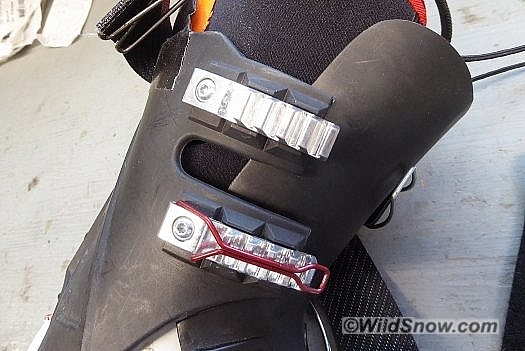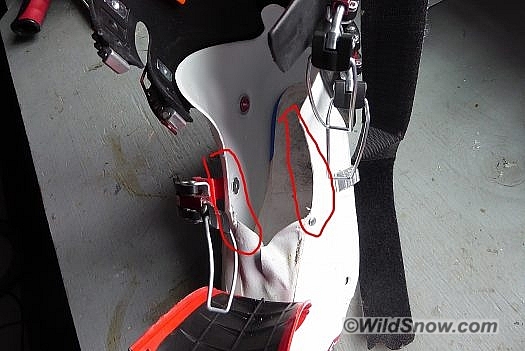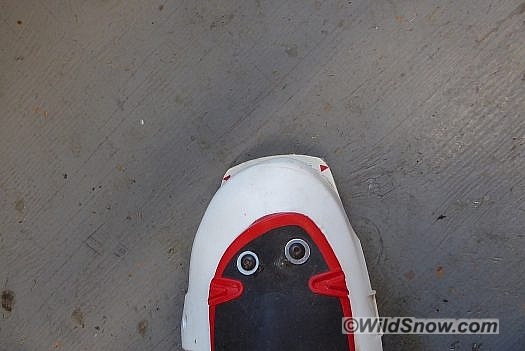
First step in fitting nearly any ski touring boot for myself, I begin with a 27.5 that’s usually a half size too short, and do a big toe punch along with opening up the liner toe. You can see the obvious bump of the toe punch. I also grind down the toe duckbill as much as possible, for slightly easier walk/hike action — that’s visible in the photo as well. If I end up loving the boot, I attempt to acquire a size 28 liner, but the modified liner is okay. Also visible in the photo: I swapped removable fasteners for the tongue anchor rivets, so I can remove the tongue while doing shell mods.
Due to ankle issues, I currently prefer a beefy boot as my daily backcountry skiing driver, uphill and down. (I’ll switch back to one-kilo class boots eventually, but for now…). The venerable Garmont last fits me the the best, so when the latest version of Scott Cosmos–numero tres–plopped themselves down on our front porch, I embarked on a fitting and mod project. I capped the shop work with field testing late this past winter, enhanced by my stumbling around the Colorado mountains this past spring.
The entire Cosmos boot series has been an epic for Scott, involving a long trail of numerous improvements (not to mention their project director’s tragic death in a mountaineering accident). All leading to this third version of the boot, clearly “mature” in the sense of performance and reliability. Our previous reviews cover structural and performance details, below I’ll concentrate more on fitting as well as a few of my own takes on field ski touring performance. Prior reviews:
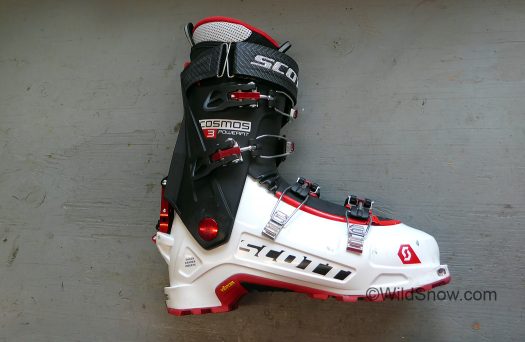
Bone stock Cosmos 3. I like the black-white design with red accents. Scaffo is Grilamid, cuff is carbon infused Grilamid. Note the power strap, the pass-through buckle made of thin wire is actually a spring that provides some give and enhances progressive flex, ingenious. Most important new feature is the external lean lock.
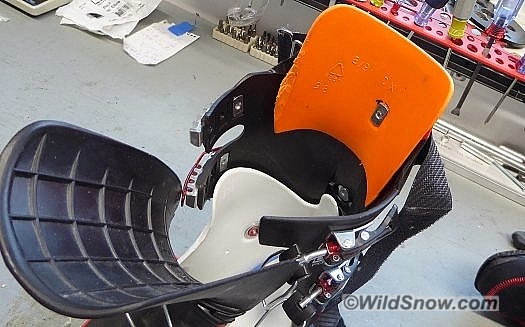
One of my feets needs more spoiler and slightly more shoe behind my skinny leg. I made the extra spoiler layer from an old boot tongue I had in my slush pile.
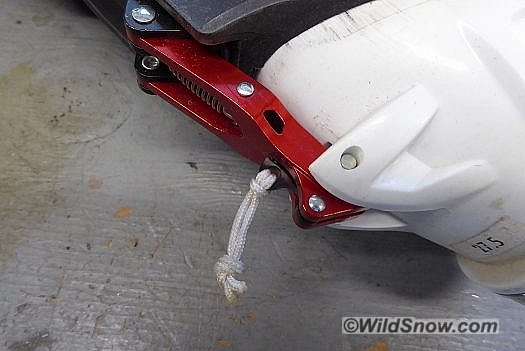
The external lean lock has worked well for me. The slot that engages the horizontal bar on the boot is precise and tight, intended to eliminate cuff slop. I’d prefer a millimeter of slop that allowed easier switching between modes. That’s an easy mod with a small round file. The lean lock includes a small hidden hook-lock that entirely eliminates sinister “ghost switching” from downhill to touring mode (see other reviews). You pull the string to release the safety lock and disengage the lock bar for touring mode. One of the strings on my boots came off, the one shown in photo is a replacement. That’s the only durability issue we incurred (myself and testers have put about 25 days on this pair).
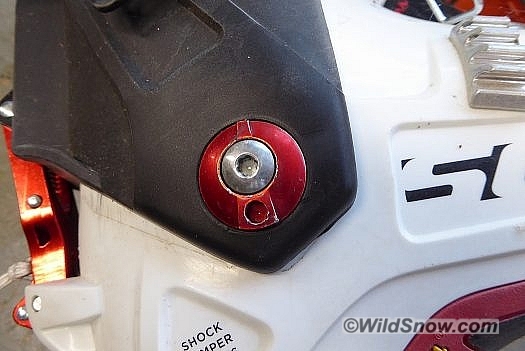
For grins, and because I can, I installed the cant rivet from a version one Cosmos.
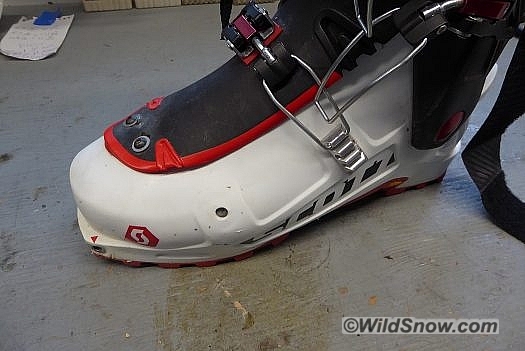
As I’m often wont to do, I stripped the vestigial 4th buckle. If you’re sitting next to me on a bar stool, as we ski mahogany ridge you might ask “you ski 4-buckle boots, don’t you?” As mahogany ridge is the place where any interpretation of reality is allowed, I’d take a long draw off my craft brewed IPA then say “yep, 4, it is the only way I go.”
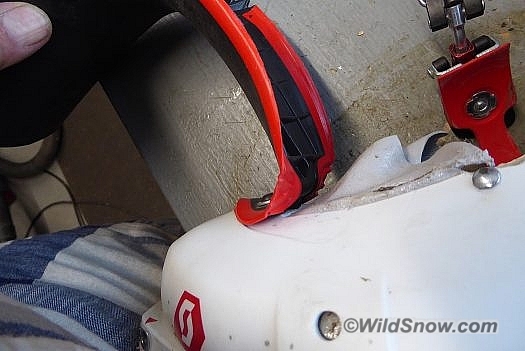
Reality check. I push the tongue’s living hinge to the limit, resulting in deformation of the plastic. This sort of boot tongue should have a mechanical hinge of some sort, but manufacturing such is technical and expensive, so boot makers usually ask the user to struggle with the springy plastic protuberance. Sigh.
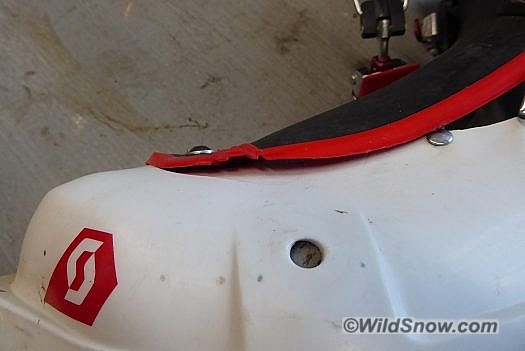
Thus, the true purpose of the vestigial buckle shall be revealed: closing three millimeters of deformation.
That’s about it. I played around with the interior boot board ramp angle a bit by posting my heels, and fine tuned the buckle mounting positions on the cuff. They ski tour well. Plenty of cuff mobility for this type of boot, weight isn’t too heinous at 1,490 grams per boot (real world configuration including any added padding or shims). On the down you do get the proverbial bulging of any “tongue” type ski boot shell. The detrimental nature of “the bulge” is over rated — you get used to it. Mainly, if you have average to wide feet at the metatarsals, the Scott shell architecture is desirable and worth a fitup.
Bonus: Someone left a comment about boots you can get your feet in if you have limited ankle dorsiflexion. Begin that quest with a tongue style boot shell, then if necessary heat mold the area over instep to open it up, and trim plastic if necessary. ID mod areas by watching your foot as you get in and out of the boot. Photo below.
WildSnow.com publisher emeritus and founder Lou (Louis Dawson) has a 50+ years career in climbing, backcountry skiing and ski mountaineering. He was the first person in history to ski down all 54 Colorado 14,000-foot peaks, has authored numerous books about about backcountry skiing, and has skied from the summit of Denali in Alaska, North America’s highest mountain.

